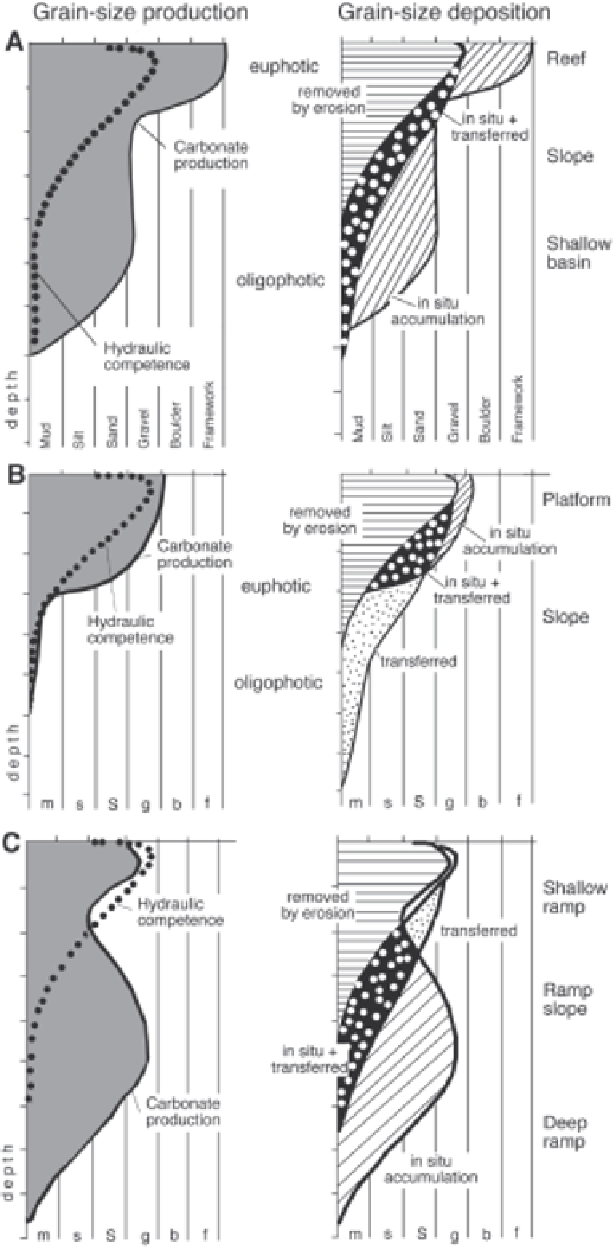Geology Reference
In-Depth Information
Fig. 15.13
.
Ecological controls on the
depositional styles of carbonate plat-
forms and ramps exemplified by the
Pomar Model.
This model explains the
different kinds of platforms and ramps
as a function of the type of sediment that
was produced (reflected basically by
grain size), the place (locus) of sediment
production, and the hydraulic energy.
The type of sediment and the locus of
production depend on the carbonate-pro-
ducing organisms whose distribution is
governed by light and nutrients. Figs. A,
B and C show which sediment types are
produced (expressed by grain size) and
by what processes and where the sedi-
ments accumulate contributing to the
creation of different depositional slopes.
Note the differences in the carbonate
production curves and the curves of hy-
draulic competence (showing which
maximum detrital grain sizes are trans-
ported). 'Gravel' as used in this figure
refers to granule-, pebble- and cobble-
sized particles (2 to 256 mm).
A:
Euphotic framework-producing
biota, e.g. modern corals, create
rimmed
shelves.
Large and encrusting skeletons
form shallow-water reefs in the zone
with the highest water energy. Non-ce-
mented fine-grained sediments are shed
seaward, accumulating as talus, or back
into the backreef area. Oligophotic biota
may also contribute to the building of
slope deposits or even basinal deposits,
if the basin is shallow enough for light
to reach the sea floor. Note that the fig-
ure does not consider the backreef la-
goonal areas.
B:
Euphotic soft-substrate dwelling or-
ganisms (e.g. algae) produce gravel-
sized skeletons that create a flat-topped
carbonate platform.
Finer bioclasts are
shed off the platform, creating a talus,
whereas gravel-sized skeletons remain
in situ, producing a zone of hydraulic-
energy dissipation that may stabilize or
baffle the sediment.
C:
Oligophotic organisms, such as some
larger foraminifera and red algae, liv-
ing in deeper commonly non-wave agi-
tated areas, produce gravel-sized sedi-
ments and
distally steepened ramps.
A
talus slope forms at certain water depths
from increased sediment accumulation,
in-situ gravel-sized skeleton production
and fine-grained sediment swept from
the shallower euphotic zone into deeper
areas. Modified from Pomar (2001a).

